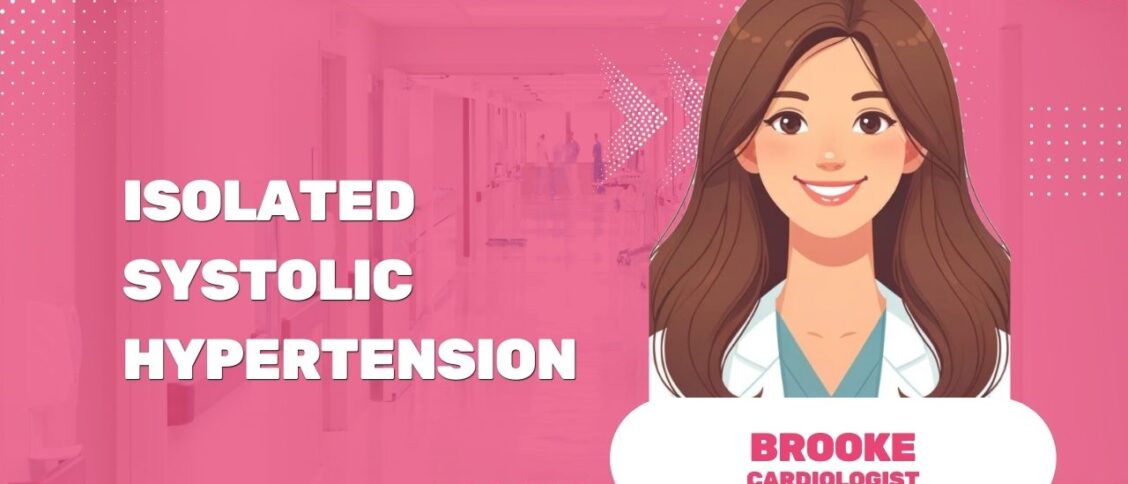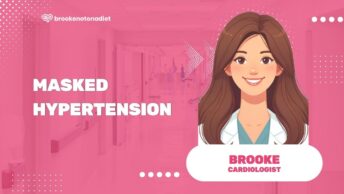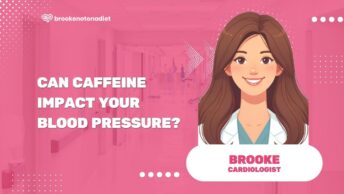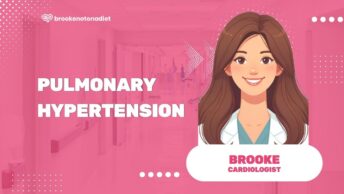Understanding the symptoms of isolated systolic hypertension (ISH) can be tricky. It’s a condition that often flies under the radar, potentially leading to serious health complications. ISH is characterized by a high systolic blood pressure (the top number in a reading), while the diastolic pressure (the bottom number) remains normal.
In this article, I’ll shed light on the often subtle and overlooked symptoms of ISH. Recognizing these signs early can be a game-changer, potentially preventing heart disease or stroke. I’ll also delve into the risk factors and the importance of regular check-ups for prompt diagnosis.
So, if you’re keen on learning more about ISH, stick around. This knowledge might just save a life – maybe even your own.
Understanding Isolated Systolic Hypertension
Diving deeper, it’s time we understand more about Isolated Systolic Hypertension (ISH). Having touched upon the symptoms and its potential risk factors, let’s get going on what we know about the cause of ISH and how it’s diagnosed.
What is Isolated Systolic Hypertension?
Isolated Systolic Hypertension (ISH) is a form of hypertension where the systolic blood pressure (the top number) is high while the diastolic (the lower number) remains within a healthy range. For instance, a blood pressure reading might register as 130/80, with 130 being your systolic pressure and 80 the diastolic. Having a systolic pressure over 130 means you’re dealing with ISH.
Causes of Isolated Systolic Hypertension
Though the exact cause of ISH remains unknown, certain risk factors have been associated. Let’s look at the major ones:
- Age: As we age, our arteries start stiffening, leading to an increase in systolic blood pressure. People over the age of 60 are more susceptible.
- Family history: If there’s a history of high blood pressure in your family, you’re more at risk.
- Lifestyle factors: High sodium intake, obesity, lack of physical activity, smoking and excessive alcohol consumption can all contribute to ISH.
Approaches to lowering blood pressure for people with ISH usually involve changes in diet, exercise, medications, or a combination of these tactics. Remember, adequate self-care and regular health check-ups can help regulate your blood pressure effectively.
Armed with this knowledge about ISH, let’s move on to explore how this condition is diagnosed and managed.
Symptoms of Isolated Systolic Hypertension
Understanding the symptoms of isolated systolic hypertension (ISH) is vital for maintaining a healthy lifestyle and effective blood pressure management. As mentioned earlier, ISH is a form of hypertension characterized by high systolic blood pressure, with diastolic pressure remaining within the normal range.
High Systolic Blood Pressure Reading
The most notable characteristic of ISH is a high systolic blood pressure reading. Normal blood pressure ranges from 90/60 mmHg to 120/80 mmHg. Consider regularly checking your blood pressure either at home using a blood pressure monitor or at a healthcare professional’s office.
In ISH, the systolic blood pressure (the top number) is 130 mmHg or more, while the diastolic blood pressure (the bottom number) stays below 80mmHg. Since this condition often occurs in people aged 50 and above, it’s critical to regular monitor your blood pressure as you advance in age.
Dizziness and Lightheadedness
Though ISH doesn’t always present visible symptoms, some individuals may experience dizziness and lightheadedness. This happens due to the added pressure on the arteries which can affect blood flow. It’s often accompanied by a sense of imbalance and sometimes fainting spells, particularly after sudden movements such as standing up too quickly.
Fatigue and Weakness
Another potential indicator of ISH can be a general feeling of fatigue or weakness. Despite adequate rest, you might feel lethargic and lack the usual energy to carry out your everyday tasks. This symptom may easily be mistaken for normal age-related fatigue or other health conditions. Therefore, getting your blood pressure checked becomes particularly relevant if you associate with this symptom.
Headaches
Though not uniformly present in all cases of ISH, severe and recurrent headaches could be a sign of this health condition. The nature of these headaches can vary from dull, throbbing pain to intense migraines. If you’re experiencing unexplained frequent headaches, monitoring your blood pressure could be an essential step in identifying the issue.
It’s important to remember these symptoms may not always be directly linked to high blood pressure as they could arise from a variety of different health conditions. Regular health check-ups and tracking your blood pressure using a blood pressure chart can aid significantly in tracking your overall health and lowering blood pressure if needed. Please, continue reading to learn about available treatment options.
Complications Associated with Isolated Systolic Hypertension
In our journey to understanding isolated systolic hypertension (ISH), it’s crucial that we also consider possible complications that can arise if this condition is left unmanaged. From an increased risk of heart disease, subsequent development of other cardiovascular conditions, to possible kidney damage, the risks can be life-threatening. Let’s dive into these topics to understand them better and help you on your path to maintaining healthy blood pressure.
Increased Risk of Heart Disease
ISH is not something to be taken lightly as it directly contributes to the increased risk of heart disease. High systolic blood pressure indicates that your blood vessels and heart are under more pressure than they should be, potentially leading to serious heart-related complications. In fact, people with ISH are more likely to experience:
- Heart failure
- Coronary artery disease
- Cardiac arrest
Considering these points, regular monitoring of blood pressure becomes extremely important. Using a blood pressure monitor at home is a quick and convenient way to check your levels and ensure they fall within the recommended blood pressure ranges indicated on a blood pressure chart.
Development of other Cardiovascular Conditions
The impact of ISH isn’t only limited to an increased risk of heart disease. There’s also a higher likelihood of developing other cardiovascular conditions. Some of these include:
- Stroke
- Atherosclerosis (artery hardening)
- Left ventricular hypertrophy (thickening of the heart’s left pumping chamber)
Understanding the potential risks also implies taking appropriate steps for lowering blood pressure. This includes lifestyle changes and, in cases where these aren’t enough, discussing medication options with your healthcare provider.
Kidney Damage
Finally, long-term unmanaged ISH can significantly strain your kidneys, leading to kidney disease or even kidney failure. Some signs of kidney disease include:
- Fatigue
- Persistent itching
- Loss of appetite
- Swelling in the hands or feet
- Blood in urine
If you experience these, or any unusual symptoms, it’s essential to check your blood pressure and consult with a healthcare professional if the numbers on the blood pressure chart continue to remain high.
Diagnosis of Isolated Systolic Hypertension
Understanding and diagnosing Isolated Systolic Hypertension (ISH) isn’t a simple undertaking. It involves a range of procedures, from Blood Pressure Measurement to Additional Diagnostic Tests, to accurately identify and monitor the condition.
Blood Pressure Measurement
Checking your blood pressure is the first primary step in diagnosing ISH. A typical blood pressure monitor is used for this purpose. Located on your upper arm, this device reads two numbers. The top systolic number indicates how much pressure your blood is exerting against your artery walls when the heart beats. The bottom diastolic number reflects the pressure when your heart is at rest between beats.
It’s crucial to interpret the numbers correctly. You can refer to a handy blood pressure chart to decipher your ranges. Here’s a brief look:
| Blood Pressure Category | Systolic mm Hg (upper number) | Diastolic mm Hg (lower num) |
|---|---|---|
| Normal | Less than 120 | Less than 80 |
| Elevated | 120-129 | Less than 80 |
| High Blood Pressure (Hypertension) Stage 1 | 130-139 | 80-89 |
| High Blood Pressure (Hypertension) Stage 2 | 140 or higher | 90 or higher |
| Hypertensive Crisis (seek immediate medical attention) | Higher than 180 | Higher than 120 |
An ISH diagnosis is given when the systolic measurement continually exceeds 140, but the diastolic remains under 90.
Additional Diagnostic Tests
After successfully identifying an elevated systolic blood pressure, other tests may be necessary to rule out underlying conditions. It’s important to note, any auxiliary check-up should be looked at as an opportunity, not a challenge. These additional tests could include:
- Blood tests: High cholesterol levels can contribute to hypertension.
- ECG (Electrocardiogram): Detects irregularities in the heart’s structure or rhythm.
- Ultrasound of the heart and kidneys: Visualizes these organs and checks for damage.
By effectively diagnosing ISH, one sets themselves up for addressing the issue head-on. And with the right strategies, such as a balanced diet or regular exercise, lowering high blood pressure can become a manageable task. It’s important to remember, consultation with a medical professional is vital – they’ll guide you with the best treatment measures.
So if you’re experiencing any unusual symptoms, don’t hesitate to get checked. Keep a keen eye on your health today.
Treatment Options for Isolated Systolic Hypertension
ISH isn’t a death sentence—it’s a condition that can be managed with the right treatment plan. I’m going to talk about three main categories: Lifestyle Changes, Medications, and Regular Monitoring. Let’s dive in.
Lifestyle Changes
Let’s start with the lifestyle adjustments you could make:
- Healthy Diet: Adopting a diet low in sodium and rich in fruits, vegetables, and low-fat dairy products can help lower blood pressure. It’s often called the DASH (Dietary Approaches to Stop Hypertension) diet.
- Physical Activity: Regular exercise of at least 30 minutes most days of the week can drop your blood pressure.
- Moderation in Alcohol: Limiting alcohol intake can also lower blood pressure ranges. Please note, overdoing it can lead to hypertension instead!
- Quit Smoking: Each cigarette you smoke can raise your blood pressure. Quitting helps your blood pressure return to normal.
Medications
Medications are often necessary in managing ISH. They work best when paired with lifestyle changes. Common drug choices include:
- Diuretics
- Beta-blockers
- Calcium channel blockers
- Angiotensin-converting enzyme (ACE) inhibitors
- Angiotensin II receptor blockers (ARBs)
Remember, it’s important for you to regularly take your prescribed medicine and keep all your appointments with your healthcare professional.
Regular Monitoring
While making lifestyle changes and using medications, you’ll need to check your blood pressure regularly. Modern blood pressure monitors are easy to use and accurate. My advice? Learn to use one and get into the habit of checking your blood pressure at home.
To interpret your readings, use a blood pressure chart—it breaks down blood pressure ranges into categories such as: normal, elevated, hypertension stage 1, and hypertension stage 2. You’ll know what various readings mean and when to seek help.
Getting diagnosed with ISH is only the beginning. It’s critical to understand that maintaining a healthy lifestyle, taking your medication, and monitoring your blood pressure are integral parts of the journey to managing this condition.
Conclusion
While ISH can be a serious condition, it’s not insurmountable. I’ve highlighted the significance of lifestyle changes, like adopting a healthy diet and staying physically active. Limiting alcohol and quitting smoking are also crucial steps. Medications like diuretics, beta-blockers, ACE inhibitors, and ARBs can be beneficial. But remember, it’s not just about taking medication. Regular blood pressure monitoring is key, and using a blood pressure chart can help. The bottom line is simple: a healthy lifestyle, adherence to prescribed medication, and continuous blood pressure monitoring can effectively manage ISH. Stay proactive about your health, and you’ll be well-equipped to handle ISH.







